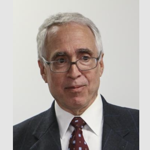The True Size of Government
![]()
espite declarations to the contrary from elected officials across the political spectrum, the federal government is much bigger, not smaller, than it was 30 years ago.
Only by using the narrowest possible definition of the true size of government--headcount in the federal civil service--could President Clinton declare that "the era of big government is over" in his 1996 State of the Union address. Although Clinton's declaration earned a roar of applause from both sides of the aisle, it was a partial truth at best, a false claim at worst. Counting all the people who deliver goods and services for Washington, while removing the masking effects of the huge Defense Department downsizing, Clinton would have been much more accurate to say that the era of big government was continuing pretty much unabated. And that is precisely what the vast majority of Americans want.
A more realistic headcount begins with the 1.9 million full-time permanent civilian federal workers who get their paychecks and identification cards from Uncle Sam. Add in the 1.5 million uniformed military personnel and 850,000 U.S. Postal Service workers who were counted in the federal workforce until their department became a quasi-government corporation in 1970, and the total full-time permanent federal workforce was just under 4.3 million in 1996, the last year for which good numbers are available on both the visible and shadow federal workforce.
Add in the people who work under federal contracts and grants or mandates imposed on state and local governments and the illusion of smallness becomes clear. In 1996, the federal government's $200 billion in contracts created an estimated 5.6 million jobs, its $55 billion in grants created another 2.4 million jobs, and its array of mandates in such fields as air and water quality and health and safety regulation encumbered another 4.7 million jobs in state, county and municipal governments. Add these 12.7 million shadow jobs to the 4.25 million civilian, military and postal jobs, and the true size of government in 1996 expands to nearly 17 million, or more than eight times larger than the standard headcount of 1.9 million used by Congress and the President to declare the era of big government over. And the count does not even include the full-time equivalent employment of the people who work on a part-time or temporary basis for Uncle Sam--for example, the 884,000 members of the military reserves.
The Shadow of Government
The shadow government casts through its vast inventory of private, nonprofit and state and local partners is a blend of intent and accident. On the one hand, it reflects decades of perfectly appropriate contracting for impeccably commercial activities and non-inherently governmental functions. On the other hand, the shadow also reflects decades of personnel ceilings, hiring limits and unrelenting pressure to do more with less. Under pressure to create a government that looks smaller and delivers at least as much of everything the public wants, federal departments and agencies did what came naturally: They pushed jobs outward and downward into a vast shadow that is mostly outside the public's consciousness.
That creates a truth-in-advertising problem. It is impossible to have an honest debate about the role of government in society if the measurements only include part of the government. The government also is increasingly reliant on non-federal workers to produce goods and services that used to be delivered in-house. Not only does the shadow workforce create an illusion of smallness that may mislead the public about the true size of government, it may create an illusion of merit as jobs inside government are held to strict merit standards, while jobs under contracts, grants and mandates are not. It may also create illusions of capacity and accountability as agencies pretend they know enough to oversee their shadow workforce when, in fact, they no longer have the ability to distinguish good product or service from bad.
The government knows virtually nothing about its shadow. Neither the Office of Personnel Management nor the Office of Management and Budget has ever counted the full-time-equivalent non-federal workforce, let alone analyzed its appropriateness.
Procuring such quasi-governmental labor allows politicians to say government is cutting employees. And at first glance--which is the glance that Congress and the President usually take--total federal employment (civilian and military) shrank by nearly 900,000 jobs between 1984 and 1996. (The year 1984 is used as the base because it's the first year for which good data are available on the contract and grant workforce; 1996 is the most recent year for which comparable data are available.)
At second glance, however, the Defense Department accounted for more than 100 percent of the decline. Subtract from the downsizing DoD's 260,000 cut in civilian employment and 670,000 cut in military personnel, and the non-Defense civilian workforce actually grew by 60,000 over the 12 years. Add in 145,000 new Postal Service jobs, and the non-Defense workforce grew by more than 200,000.
The masking effects of the Defense downsizing continue all the way back to 1960. Expressed in the aggregate, total civilian employment has declined steadily since reaching its post-World War II high in 1968 and is now smaller than it was in 1960. But remove Defense from the totals, and the civilian workforce grew by nearly half between 1960 and 1996, increasing from 760,000 employees to 1.1 million.
This is not to discount the very real downsizing that has taken place in many domestic agencies over the past five years. Civilian employment at non-Defense agencies fell by nearly 100,000 full-time-equivalent jobs during Clinton's first term, with particularly deep cuts coming at the General Services Administration, the departments of Housing and Urban Development and Interior, and OPM. Even so, non-Defense civilian employment is up, not down, since 1960, the starting point for the Clinton assertion that the U.S. government is smaller than it was when John F. Kennedy took office.
Turn next to the contract and grant workforce. Again at first glance, the shadow of government also shrank between 1984 and 1996, falling by 1.2 million jobs, including a 375,000 decline during Clinton's first term. But subtract Defense Department cuts once again, and the shadow actually grew over the 12 years by nearly 400,000 jobs, most of which were created through service contracts. Once again, absent the Defense downsizing, the shadow of government grew almost 15 percent between 1984 and 1996. As the Defense shadow declined, so did the purchase of products like tanks, guns, ammunition, boots and uniforms. In 1984, one out of two contract jobs involved products; by 1996, just one out of five did.
Unfortunately, the contract and grant data are so inconsistent prior to 1984 that there is no way to estimate the total shadow workforce. The only way to establish any meaningful trend line is to use the National Income and Product Account estimates of federal "consumption expenditures," which contain government purchases of goods and services. Calculated in constant 1990 dollars, these expenditures increased from $240 billion in 1960 to $357 billion in 1968, $393 billion in 1984 and $452 billion in 1988. They dropped to $449 billion in 1992 and $408 billion in 1996. Although these consumption expenditures include military and civilian civil service compensation, those costs have either declined (military) or remained relatively constant (civilian) over the period, suggesting that the federal government's contract workforce increased steadily during the 1960s and 1970s, only leveling off in the late 1980s and early 1990s with the Defense downsizing.
It is impossible to go back in time to estimate the total number of state and local employees who worked under federal mandates. It seems reasonable to conclude, however, that the number has increased dramatically as Congress and the President figured out how to encumber state and local governments at no cost to the federal Treasury.
The New Public Service
Whether the shadow of government is a problem depends very much on who is asking. Democrats will find ample support in the numbers for what Rep. Dennis Kucinich, D-Ohio, recently labeled a "piecemeal dismantling of our republic." Republicans, meanwhile, may well agree with Rep. Pete Sessions, R-Texas, that agencies should give over more work to private-sector competitors.
What few will dispute is that the federal government relies on a sizable shadow to do its job. "You can use any number you want," former OMB deputy director John Koskinen once admitted. "But whatever it is, it is a lot of people." Indeed it is. The shadow may not show up in the civil service headcount that allows presidents to claim that the era of big government is over, but it produces federal goods and services nonetheless. Given the personnel ceilings and freezes that have existed for the better part of a half-century, the federal government simply couldn't do its job without a large corps of contract, grant and mandate employees.
It is a fact already well understood by students at America's top schools of public policy and administration, who know that many of the nation's most challenging jobs are now to be found outside the civil service, not inside. At Harvard University's John F. Kennedy School of Government, for example, less than half of the class of 1997 took jobs in government, with nearly a quarter going to the nonprofit sector. "Training for the nonprofit sector is one area in which public policy schools need to redirect their focus," Kennedy School Dean Joseph Nye has written.
A recent survey by George Washington University's public administration department confirms the movement away from government. Asked to rank their preferred employers, 53 percent of the national sample of 1,000 public administration graduate students ranked government first, with the federal government the preference of 27 percent and state and local government of 26 percent. The rest of these future public servants hoped to serve in the shadow of government, with 27 percent looking to the private sector, 22 percent to nonprofits.
Some will object to defining private contractors as public servants. After all, contractors deliver their products for a price, while civil servants provide their labor for a wage. Yet, if headcount is to be used in measuring the true size of government, it only seems reasonable to count every head in the total.
Expanding the headcount would force Congress and the President to confront a series of difficult questions. Instead of engaging in an endless effort to keep the civil service looking small, they would have to ask just how many of the 16.9 million federal "producers" should be kept in-house and at what cost. One can easily argue that the answers would lead to a larger, not smaller, civil service, or at least a civil service very differently configured. There are many good reasons to hire a shadow employee, whether to improve government performance, protect taxpayer interests, or protect small business. But maintaining an illusion of smallness is not one of them.
Congress and the President would also have to ask tougher questions about who works in the shadow and under what conditions. It makes no sense, for example, to enforce a rule-bound merit system for one set of federal producers, while allowing an entirely different system for contractors, grantees, and state and local surrogates.
Counting all the jobs might also lead to a long-overdue discussion of public service in non-government settings. More than a third (4.7 million) of the federal government's 1996 shadow worked for state and local government, which makes them public employees, not private. Over a sixth (2.4 million) worked for grantees of one kind or another, including public and private universities, producing everything from knowledge to smoother highways. Almost a third (4 million) worked for private contractors producing various services. Less than a tenth of the total (1.6 million) actually worked delivering products to government in the prototypical contractor relationship.
It is particularly difficult to draw lines between public and private when contractors and civil servants do the same jobs--often in the same office at the same time. Besides the size of the paycheck and the level of job security, there may be little discernible difference between the management analyst who works for the Commerce Department and the one who works for Arthur Andersen, the computer programmer who works for the Treasury Department and one who works for Unisys, the faculty member who teaches for the Agriculture Department Graduate School and one who teaches for Georgetown University, or the cancer researcher who works for the National Institutes of Health and the one who works for Upjohn. Again, there may be good reason for using contract, grant or mandate employees, not the least of which may be the federal government's inability to pay a competitive wage for key jobs. But civil servants and shadow workers can still share a common sense of service. Like identical twins raised apart, they may find themselves working in different sectors at different pay, but for very similar reasons.
Even if they don't share a common purpose, shadow workers still have public obligations. Just because they receive their paychecks and identification cards from private firms or nonprofit organizations does not mean they can be ignored as distant pieces of the federal public service. They may be motivated by profit, and may serve multiple customers, but they accept a public service obligation whenever they act on behalf of the federal government.
The Boeing employees who work on the space shuttle are no less obligated to do their jobs properly than the NASA employees who work at their side; the Lockheed Martin employees who administer state welfare programs are no less obligated to be fair and accurate than the employees they replace; the ICF-Kaiser employees who meet with concerned citizens at Superfund sites are no less obligated to be responsive than the Environmental Protection Agency employees they represent; the Westinghouse employees who clean up nuclear waste sites are no less obligated to protect public safety than the Energy Department employees who guide their contracts. The more the federal government relies on third parties to deliver public services, the more those third parties must recognize the public obligations of their private or nonprofit service.
Paul C. Light, Douglas Dillon Senior Fellow and founding director of the Center for the Public Service at the Brookings Institution, is the author of The True Size of Government (Brookings, 1999)
NEXT STORY: Look Both Ways Before Crossing







